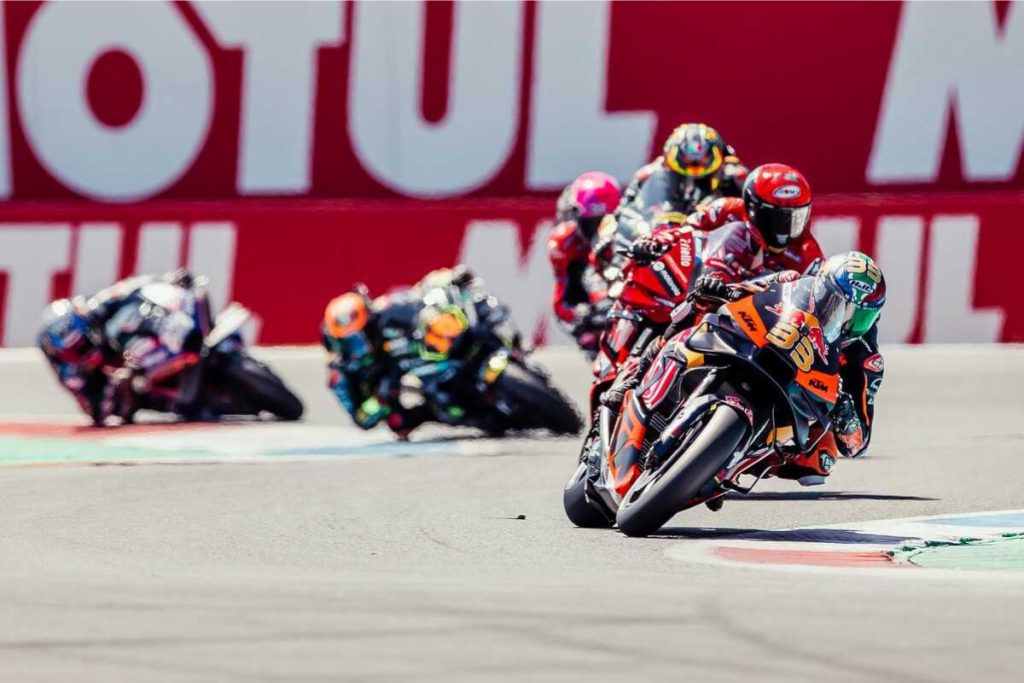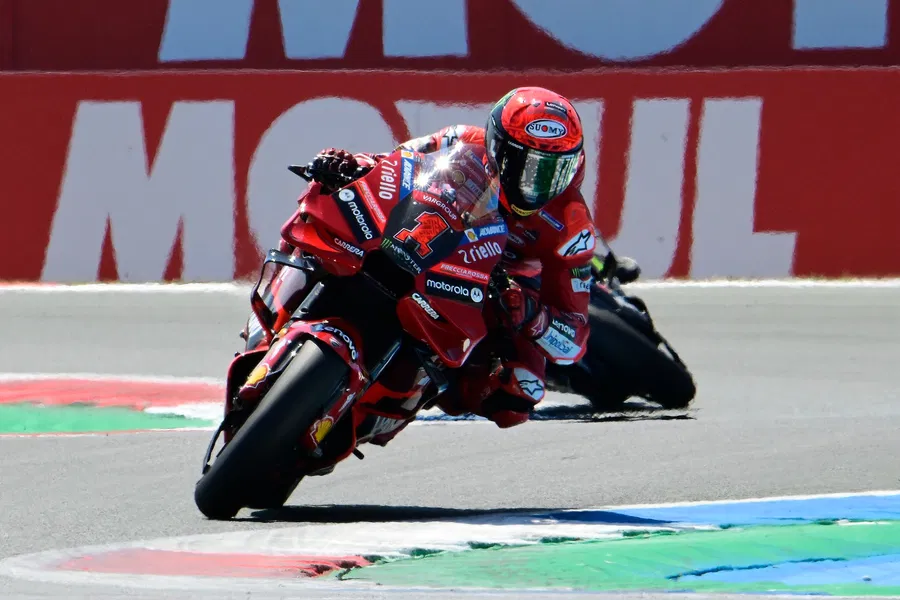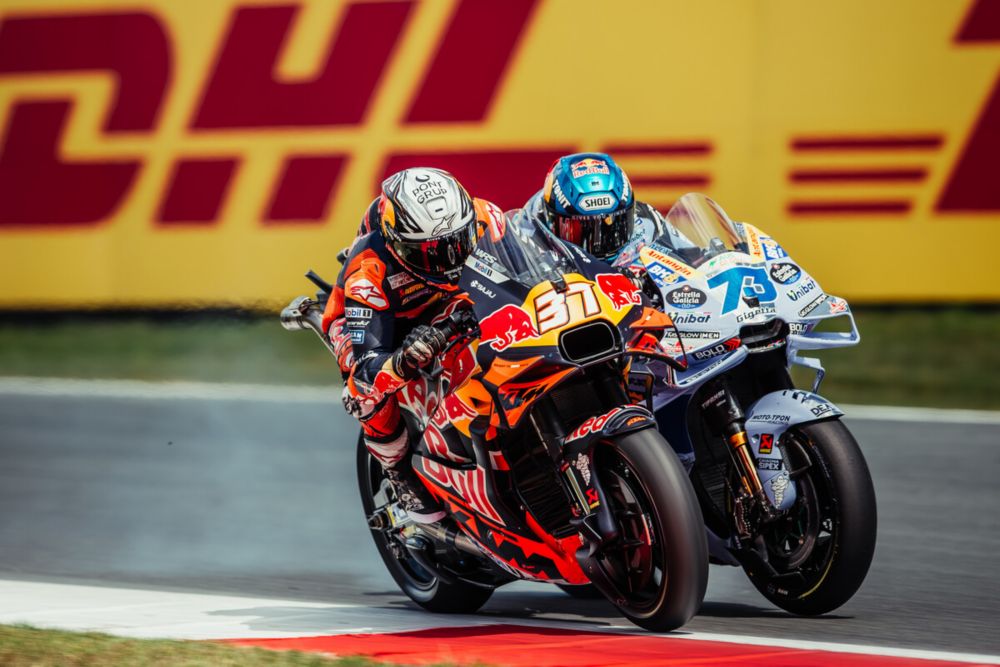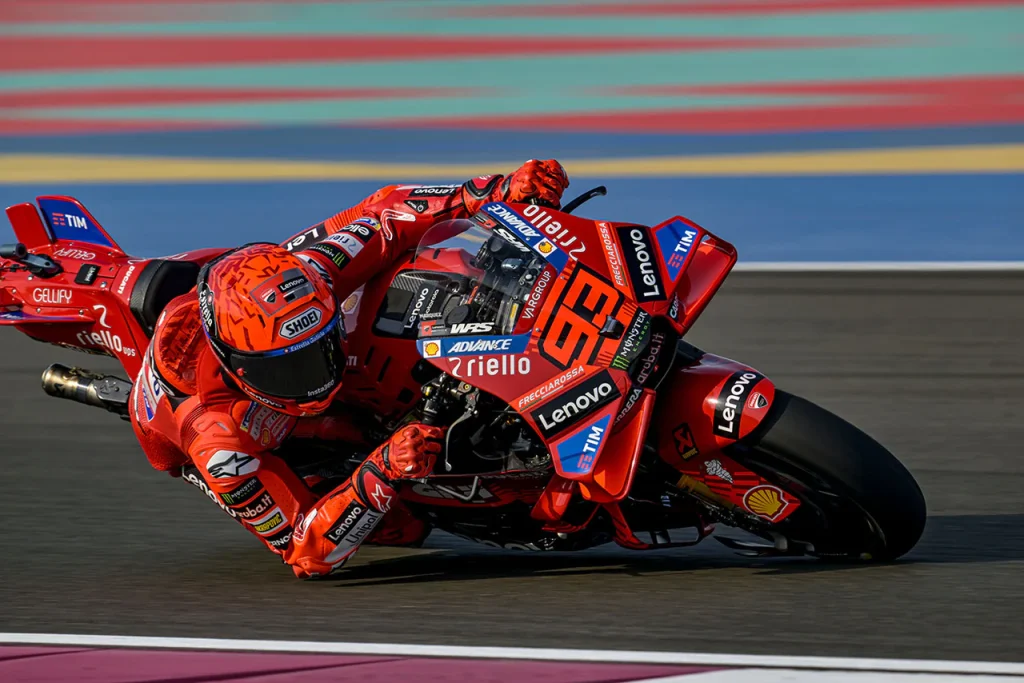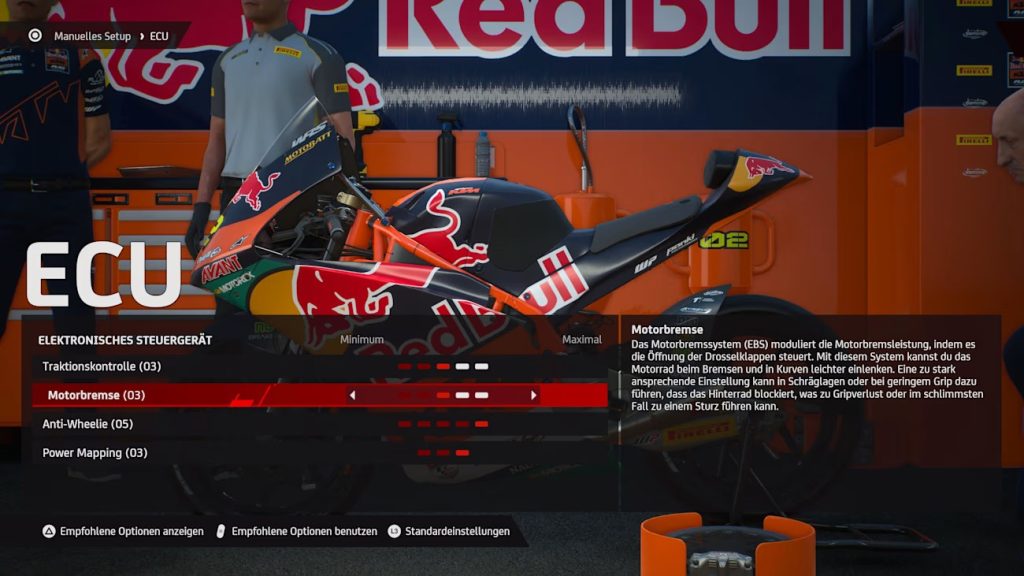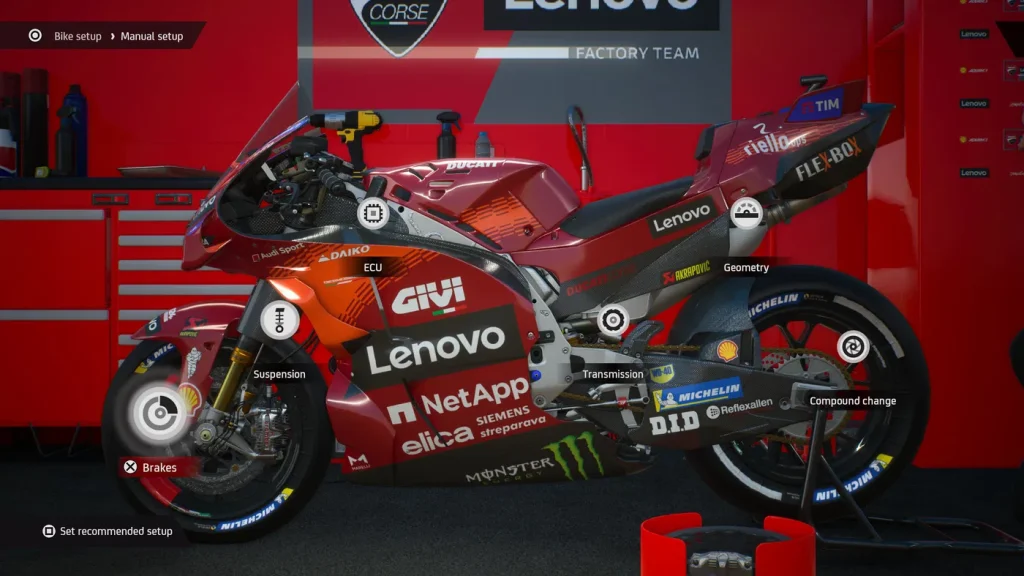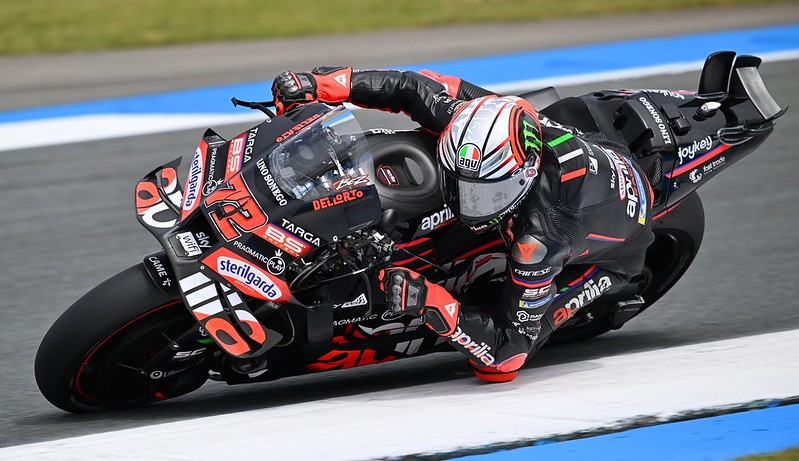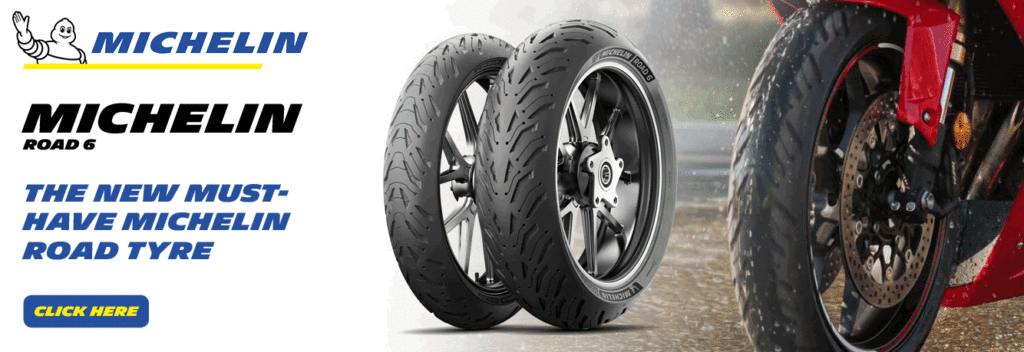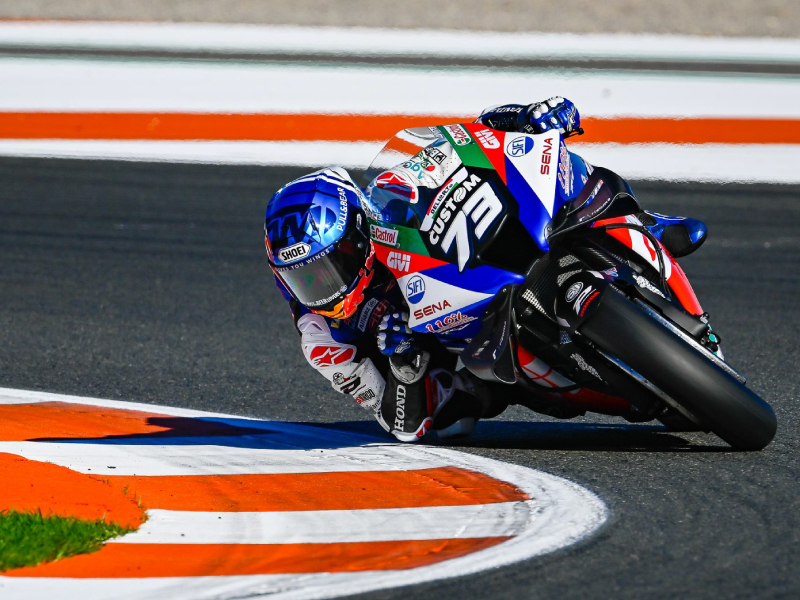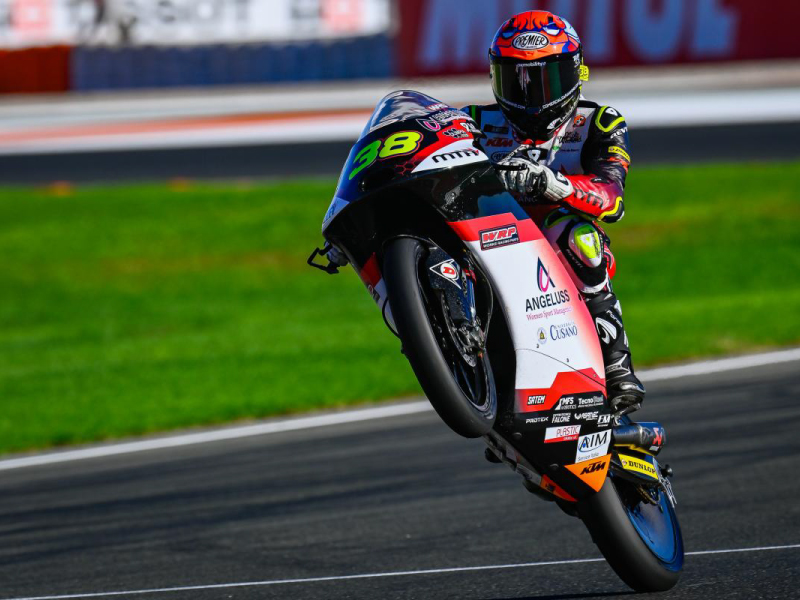MotoGP is going through some strange times at the moment. We have Marc Marquez walking away with the championship, we have Bezzecchi showing form on the Aprilia and Pedro Acosta living up to his reputation as MotoGP’s prodigal son.
These riders are largely happy and are receiving their due praises, but others are finding the going a little tough….
By Donovan Fourie
Two, in particular, come to mind – the two-time champion Pecco Bagnaia and South Africa’s own anointed prince, Brad Binder.
Herein lies the problem – both are not having the greatest of times at the moment, and while their performances on a Sunday may be admirable, they are not living up to previous expectations. Both claim problems with their machinery – Bagnaia is mistrustful of the Ducati GP25’s front end, while Binder finds his front wheel locking up every time he attempts his signature late braking manoeuvres.
This all sounds plausible except that each has a teammate on the same bike doing well…
Acosta’s current podium finishing form overshadows Binder’s charges from the back of the grid, and even when Bagnaia manages a brave podium, it is completely outdone by Marquez’s comfortable wins.
So, people of the couch racing variety automatically cast doubt upon the notion that these riders are struggling with their bikes. This is on the basis that their teammates are doing well, and if one rider can do well, then there’s clearly nothing wrong with the bike.
The complainers must simply harden up and ride.
The problem with this logic is that couches tend to have a block-style handling that suits any occupant. MotoGP bikes, or indeed any race bike, do not have the same universal utility.
I’m going to help illustrate this with a personal anecdote:
Back in 2004, I was young, fit and brainless enough to go too fast around a racetrack on a motorbike, so much so that I found myself in a team racing in the South African National Superbike Championship, namely the USN Suzuki team. We found ourselves alongside the CellC Suzuki works team, both on GSXR1000s.
I had a mechanic who was savvy in the way of motorcycle setup, and the two of us managed a pretty good base. It was a Kyalami race where we had found a particularly good setup, and the chances of a decent result were well within our grasp.
It was then that our team manager came waltzing into the pits excitedly, happily flourishing the news that Hudson Kennaugh’s mechanic had agreed to share his setup sheet with us.
Images from the game MotoGP ’24
Hudson, that year, won the championship. Actually, no – he completely destroyed it. Of 20 heats raced that year, he won 18 of them, usually by a distance far longer than the pit straight. He was often a second a lap ahead of anyone else. So, the idea that we could replicate his setup sheet and perhaps unlock the key to his speed was indeed titillating.
Then we looked at his setup sheet compared to our own, and doubt crept in.
Changing our setup to match his would take us some way into the evening, but we did it all anyway..
A couple of hours later, the shock and forks were being stripped down and completely changed. The gearing was being changed to something far from what we had. Once everything was returned, the shock and forks had to be turned to a very different set of click measurements. Nonetheless, by morning practice the next day, it was ready to go.
I climbed aboard and immediately thought “wait…”
The seat height was much higher than what I had, while the forks were pulled through so far that they were in danger of stabbing an eye out. The bike felt as though it was going to tip forward before I’d even set off.
On track, it was nothing less than terrifying. Every time I so much as touched the brakes, the bike would weave and bounce out of control. When I did finally find the courage to tip in, the front wheel would carry on straight. More so, the gearing was set to use up to only fourth gear, so the slower corners required crashing the thing into first.
I’d then suffer even more wayward behaviour from the rear while the front shuddered in protest.
Get on the gas, and the rear doesn’t slide in a happy, friendly way – it juts out sideways uncontrollably. Then, when I finally managed to get the bike up straight and pointing vaguely in the right direction, the merest hint of throttle and the front wheel was rocketing skywards.
I did three laps and pulled into the pits, underwear thoroughly soiled. My team convinced me to ride out the session, which I did. After gathering all the bravery I could muster, I eventually ended up four seconds a lap slower than I was the day before.
After the session, I humbly asked the poor mechanic if he could begin the laborious task of putting the bike back to the way I had it.
This left my confidence somewhat shattered – Hudson was able to acrobat this bike to a record pace, and I found myself pale-faced and terrified. Was I really that crap?
I popped next door to the CellC team and searched out Hudson teammate, Trevor Crookes. Trevor was an accomplished rider himself, hence his position on the works team. While he was unable to match his teammate’s ridiculous pace, he was a good bet for second place.
I humbly asked him if he too used a similar setup to Hudson. The response was wide-eyed and began with some unpublishable expletives. He eventually exclaimed, “I have no idea how Hudson rides the bike that way.”
After more fishing, it turned out that Trevor’s setup was quite similar to mine.
If you had given me Hudson’s bike to ride for an entire year, I would never have been able to match even my own pace, never mind Hudson’s. That was with a certain setup.
In MotoGP, it could be far worse – you could end up with a bike whose setup parameters will not give a bike you’re comfortable with, no matter how much you change the setup. And it’s not easy for a rider who has been riding their entire life in a certain fashion to now have to relearn everything again. Especially when they have to match a rider who rides that way naturally.
Just because one rider is able to ride a certain bike a certain way does not mean that the bike is universally rideable. Each rider has their own style and own strengths, and not every bike complements those strengths.
Give those riders a break. It’s more difficult than it looks.

